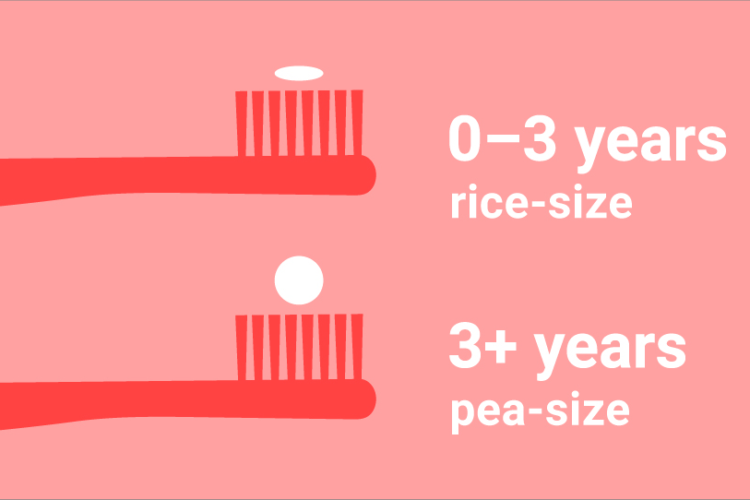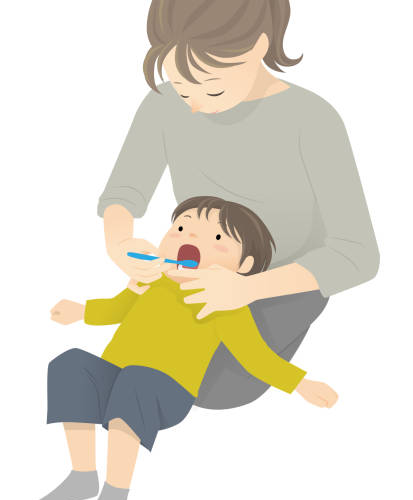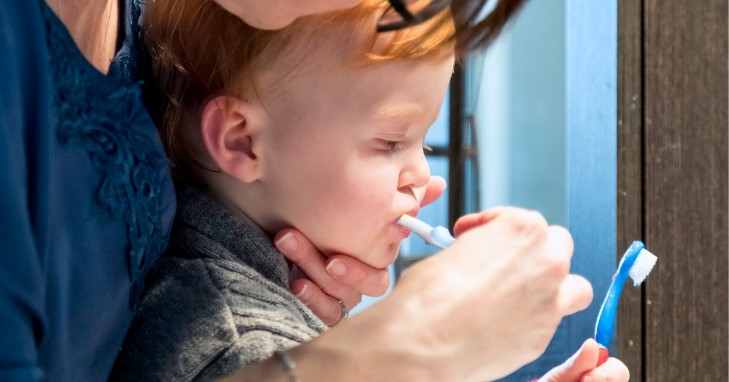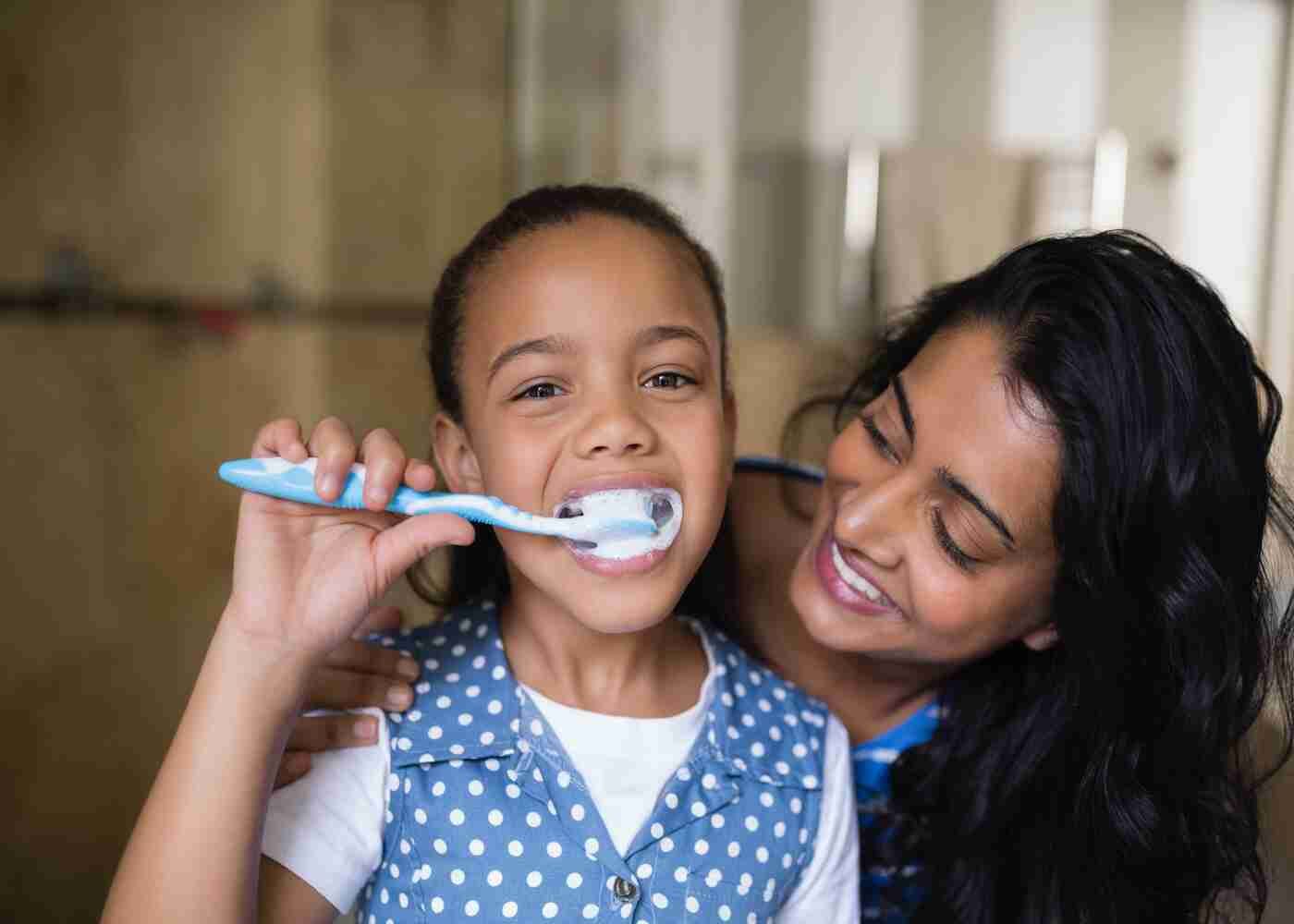Brushing your toddler’s teeth or making pre-teens brush their teeth can become a daily battle. But if you can turn the frontline into a fun time, you will win the war. The teeth-brushing skills that your toddler learns at an early age will last a lifetime. Keeping their 20 baby teeth cavity-free is important as it will lead to the best possible start for their adult teeth.
When to Start Brushing Your Child’s Teeth?
The tooth first erupts between the ages of 6-10 months. Start brushing twice daily as soon as the first tooth erupts. By the age of three most children have all 20 milk teeth. Take your baby to the dentist for an experience in a dental chair soon after their first tooth arrives. Visiting the dentist at an early age for a simple check-up can allay their fears and make them more comfortable if there's any need for dental treatment down the line. Also, there are so many preventive treatment options (other than brushing and flossing) that would reduce the chances of your child developing decay by 70-80%.
Which is the best toothbrush and toothpaste for your child?
Use an age-appropriate soft toothbrush as an adult brush would be too big to fit in their mouth. There are different kinds of toothpaste available in the market for children of different age groups. However, it’s not necessary to use toothpaste until your child is at least 1.5 years old. Until then, just wet the finger toothbrush without the paste for brushing.
Read more about the toothbrush and toothpaste in the following links:

From the age of 18 months, use a tiny amount of low-fluoride (no more than the size of a rice grain or a very thin smear layer) children's toothpaste. Increase the amount of toothpaste to pea-sized between the ages of 3-5 years and a little more by the age of 6 years.
Tooth brushing Techniques for Toddlers
Tooth decay is one of the leading causes of chronic illness in children. With effective dental hygiene tooth decay is preventable. Therefore, it is necessary to understand the correct brushing technique.
Brushing your kid’s teeth can seem daunting for many parents. Most kids are not cooperative so you need to find a technique that works for you both.
Best Position to See Inside a toddler’s mouth for effective brushing
Asking a toddler to open their mouth wide and tilt their head back is an uncomfortable position for most. So the battle begins before you even get the toothbrush close to their mouth. Here are some tips and tricks when it comes to brushing:
- Have your baby or toddler lie or sit on your lap in a bright area so you can have a good look at their teeth while you brush. For those children who are old enough to stand, stand beside or behind your child. Ideally, choose a spot where you can see your child in the mirror.
- Use your hand to support their chin gently and ask them to open their mouth wide.
- Inspect their mouth for signs of brown spots or white lines on teeth and around the gum line. Check there is no build-up of plaque or tartar.
- Use small circular motions motion on the front and back of the teeth. On the chewing surfaces, use a forward and backward motion when brushing.
- Make sure that brushing lasts for 2 mins.

Tooth brushing Techniques for kids of ages 4 to 6 years
Here are some tips for brushing a child's teeth between the
- Use a soft toothbrush: Use a soft-bristled toothbrush with a pea-sized amount of low-fluoride children's toothpaste.
- Angle the brush: Hold the brush at a 45-degree angle towards the gums.
- Use gentle strokes: Use short, gentle circles or elliptical motions to brush the outside and inside surfaces of the teeth. For the chewing surfaces, use short, sweeping back-and-forth strokes.
- Brush the tongue: Don't forget to gently brush the tongue to remove bacteria and keep the breath fresh.

Tooth brushing Techniques for kids of ages 6 to 8 years
You should still be responsible for brushing your child's teeth. While it's okay to let them practice, you'll still need to handle the brushing yourself. As they approach age 8, you can begin allowing them to brush their own teeth, but supervision is still necessary.
Brushing should be the last thing they do before bedtime, and should occur on one other occasion during the day accompanied by oral rinses after meals.
Brush their teeth for two minutes with a child-sized, soft- or medium-bristled manual or electric toothbrush. Use a pea-sized amount of fluoride toothpaste. The recommendation is 1000ppm fluoride if your child spits the toothpaste out completely. It is recommended to use less quantity of fluoride-containing toothpaste if he or she still swallows it.

Tooth brushing Techniques for kids of ages 9 to 12 years
At about age 9, your child is big enough to be allowed to brush their teeth. Some supervision will still be necessary. Make sure they are brushing for two minutes, and using a pea-sized amount of 1000 ppm fluoride toothpaste. They can safely use an adult variety of toothpaste rather than a child variety, keeping in mind to control the amount of toothpaste.

Be persistent with tooth brushing
Few parents love brushing their child’s teeth. Mornings and nights can be hectic and exhausting for everyone, leading to moments when brushing seems like the last thing anyone wants to do. However, it's crucial to remain consistent. Developing a thoughtful and effective strategy for teaching your children the significance of oral hygiene from a young age can lay down strong, lifelong foundations for maintaining healthy teeth.
To foster this habit, consider integrating brushing into a routine that’s both engaging and rewarding. For instance, you might create a fun chart where your child can place stickers after each successful brushing session. This turns the task into a game and helps them look forward to it, rather than seeing it as a chore. The key is to make brushing something they want to do, even when they're tired.
Additionally, use this time to explain why brushing is important. You could share simple stories or facts about how brushing helps keep "sugar bugs" away, which can make the process more relatable and less of a battle. Over time, these efforts will help instill good habits that will serve them well throughout their lives. (Read more about
For more detailed guidance on children's oral care practices or to consult with one of our specialists, feel free to reach out to your nearest clinic by phone, or contact us online. We are here to support you in making dental care a positive and integral part of your child's daily routine.


